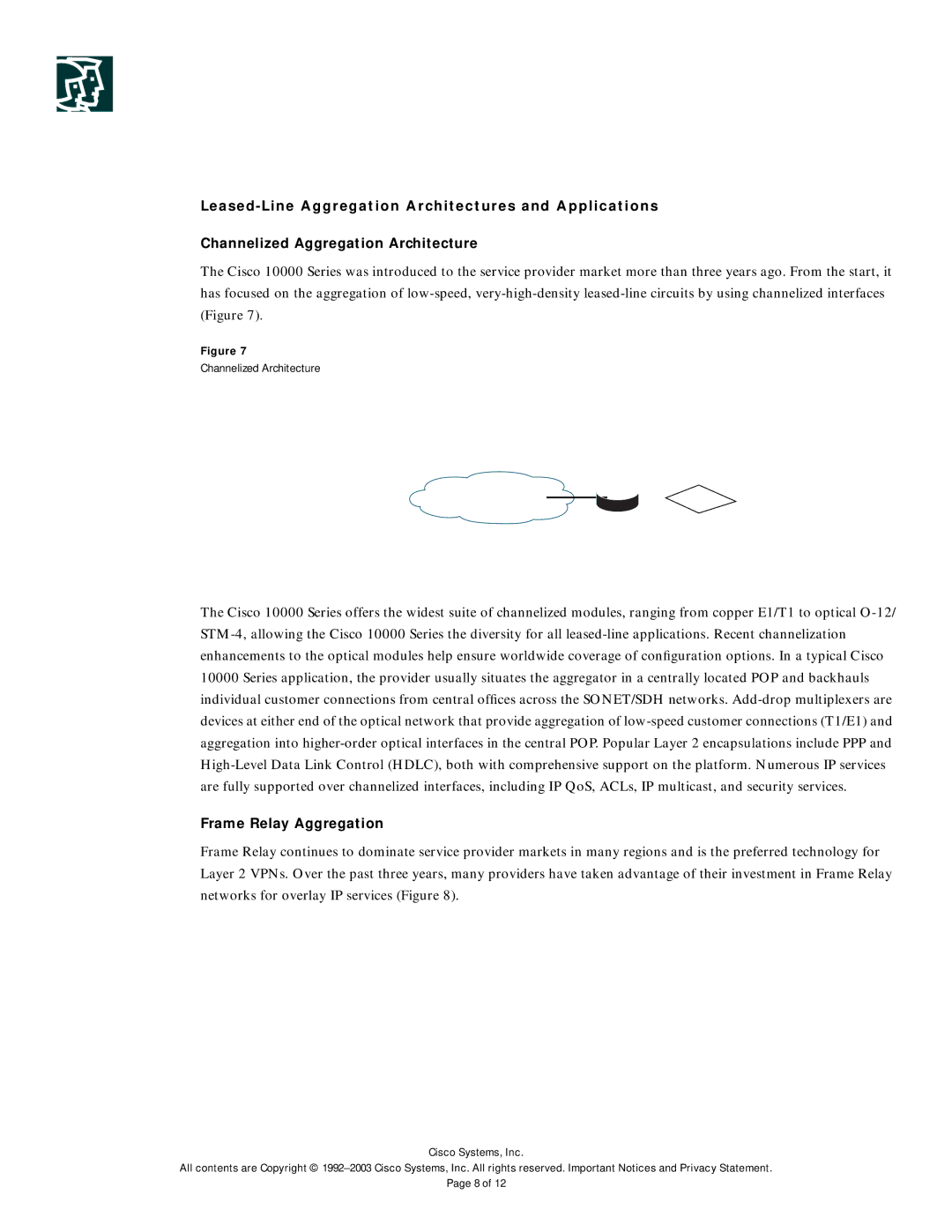Leased-Line Aggregation Architectures and Applications
Channelized Aggregation Architecture
The Cisco 10000 Series was introduced to the service provider market more than three years ago. From the start, it has focused on the aggregation of low-speed, very-high-density leased-line circuits by using channelized interfaces (Figure 7).
Figure 7
Channelized Architecture
Channelized
Interface
T1/E1
TDM/SONET
Cisco
10000
IP Network
Series
PPPor HDLC SONET/SDH
The Cisco 10000 Series offers the widest suite of channelized modules, ranging from copper E1/T1 to optical O-12/ STM-4, allowing the Cisco 10000 Series the diversity for all leased-line applications. Recent channelization enhancements to the optical modules help ensure worldwide coverage of configuration options. In a typical Cisco 10000 Series application, the provider usually situates the aggregator in a centrally located POP and backhauls individual customer connections from central offices across the SONET/SDH networks. Add-drop multiplexers are devices at either end of the optical network that provide aggregation of low-speed customer connections (T1/E1) and aggregation into higher-order optical interfaces in the central POP. Popular Layer 2 encapsulations include PPP and High-Level Data Link Control (HDLC), both with comprehensive support on the platform. Numerous IP services are fully supported over channelized interfaces, including IP QoS, ACLs, IP multicast, and security services.
Frame Relay Aggregation
Frame Relay continues to dominate service provider markets in many regions and is the preferred technology for Layer 2 VPNs. Over the past three years, many providers have taken advantage of their investment in Frame Relay networks for overlay IP services (Figure 8).
Cisco Systems, Inc.
All contents are Copyright © 1992–2003 Cisco Systems, Inc. All rights reserved. Important Notices and Privacy Statement.
Page 8 of 12

